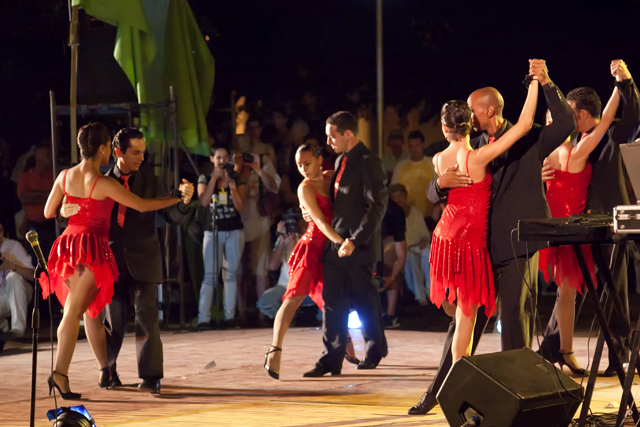DIY: Learn Cuban Dance
What I love about Cuban dance is that it is inclusive – and in so many ways. Anyone can dance it: older people, young people, those with little experience in dance. Its lack of rigid rules or strict form means it’s a friendly place to begin doing social dance. But it is also inclusive because Cuban salsa is just as diverse as the timba music – or Cuban salsa - that it follows. Timba can combine rumba, reggaetón, son, chachacha and even mambo. Likewise, while the base of Cuban salsa dancing is always salsa, dancers can break out into a reggaetón hip shake or suddenly march around the dance floor in a closed son position.
Cuban salsa is fluid and allows the dancer an immense amount of flexibility and creativity. So, the first step to take when you begin to learn to dance is to loosen your shoulders and breathe. Getting in to the music is the most important part of the dance, and the only way to really feel the beat (and the way it changes) is to relax your body. Ready?
When dancing the famous Rueda de Casino, partners almost always starts with guapea, the move that resembles the opening and closing of a book. The pair holds hands (the spine) and open and close toward one another in a mirror form, clasping and releasing the other hand. The first classes will almost necessarily start with guapea, and then teach the following four moves, forming a typical “skeleton sequence. From the guapea position, the leader might call Arriba! Each pair clasps hands in a traditional closed partner position and march around the circle. Abajo! means to back step, left, then right, in a swinging motion. And finally, the leader calls Dile que no! (Tell her no!) That is the cue for the woman to walk around the man in a synchronized step, and the couple returns to the basic step, guapea. Finally, the leader calls Dame! (Give me (her)!), and the partners change.
From the guapea position, the options are endless. The leader can call the classic sombrero, a cross-handed turn than ends with the partners having their arms around each other’s shoulders. Kentucky has the woman walking back and forth before the man does a cross -handed single turn, and brings the woman around him. Balsero or rafter (a term to refer to those who left Cuba to the US on rafts by the thousands in the 90s), is a double turn where the woman circles all the way around the man.
There are hundreds and hundreds of moves, and it is not necessarily clear where or when certain moves originated. While there is a standardized set of moves, communities across the world have organically created their own or come up with slight variations on traditional moves. For example, Bulla! (make noise) can be modified to be Bulla sexy! or even Bulla zombie (because, why not?). The move for Un fly is a clap (as if you were killing a fly), but for un fly perdido (a lost fly) you search around for three counts before suddenly clapping.
Frequently, the moves are spiked with a healthy dose of humor, from Beso (Kiss) which ends with a kiss on the woman’s cheek, to Coppelia (referring to Cuba’s most famous ice cream joint), and Exhibela (show her off). Principe Bueno (Good prince) ends with the man elegantly kissing the woman on the hand before the partners are changed, while Principe malo (bad prince) ends with a light slap on the hand. The leader might call Foto! And everyone freezes as if posing for the camera.
Just like the dance itself, the way that rueda de casino grows and changes is organic and fluid. Cuban dance is for everyone, and the perfect hobby to get hooked on while visiting the island… and continue doing when you get home.
Written by: Miriam Psychas
Miriam Psychas has a B.A. in History and Literature of Latin America from Harvard University, and spent a semester studying Cuban history, literature, and culture at the University of Havana. She was based in Havana for the fall of 2014 and 2015 directing a study abroad program and in 2016, traveled frequently to the island for her work in US-Cuba relations. She is an avid Cuban salsa dancer, and finds a rueda community wherever she goes!
Photo by: Robin Thom














